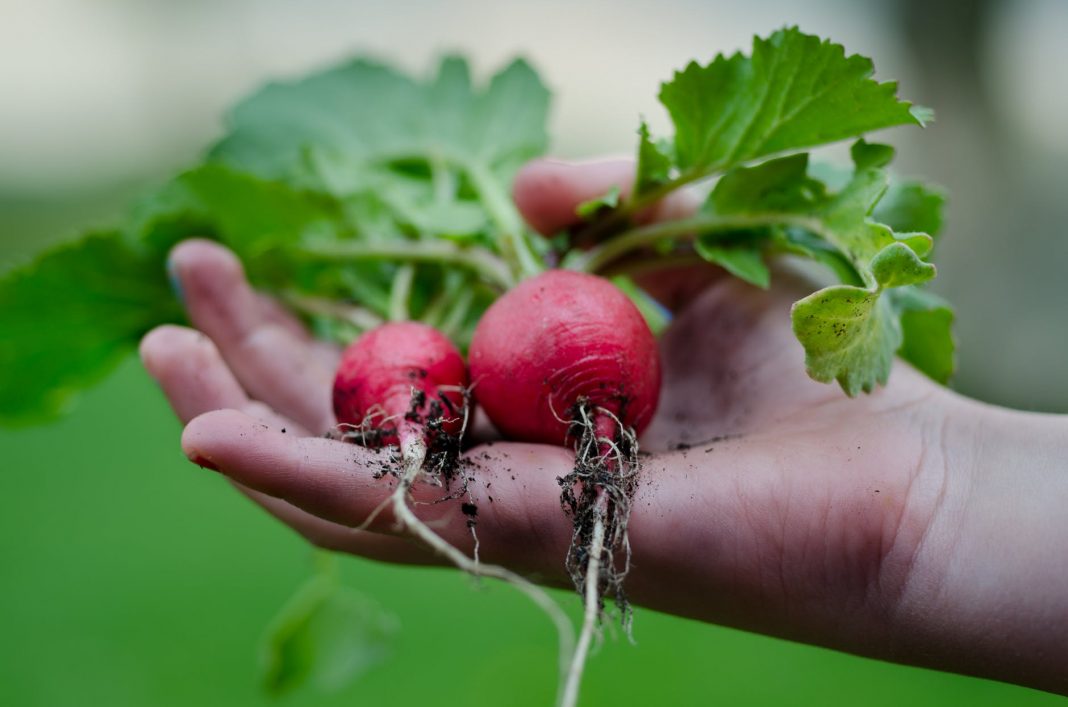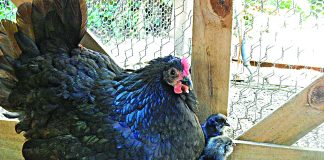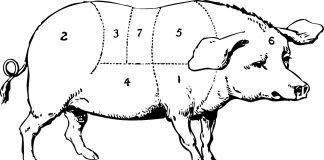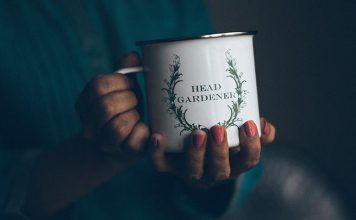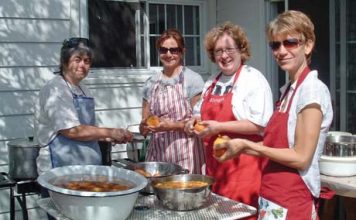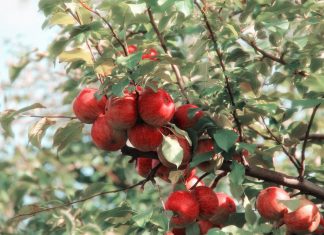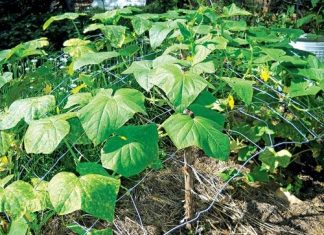 |
|
| Website Exclusive • September, 2006 |
Normally, we gardeners tend to make plans to begin planting our gardens during early spring. We select vegetables such as garden peas, lettuce, mustard, radishes, onions, and so on. If these aren’t planted as early as weather permits, there is danger of quality slipping away as warm weather comes on. Many leafy plants will bolt. Root crops, like radishes, will not only go to flower, but roots will become pithy or spongy and not fit for anything but the composter.
In defense of gardeners, there are times when fate seems to be against us. An unusually wet spring season may delay sowing seeds or putting out transplants. Most early-producing plants need well-drained loose soil and won’t tolerate soggy conditions.
There are other reasons not connected with the weather that may prevent a gardener from getting an early start or even a later start as the year rolls along. Having to “put things off” can be due to illness in the family, school activities, or even incarceration. Whatever the cause for delay, don’t despair if the right time for actual planting passes you by. You can put your time and energy into other facets of gardening that are important, too.
Let’s start with the end of the growing season. If you have a composter, this is a good time to salvage any spent plants as long as they have shown no signs of disease. Adding diseased plants to a compost heap is asking for future trouble. Likewise when grass clippings or other plants loaded with seeds are dumped into the composter. The seeds will hang in there until the compost is used on the garden and then they will spring to life and become an extensive weeding problem.

Autumn is a good time to gather fallen leaves for composting. If possible, mulch the leaves into smaller pieces before adding to the compost heap. (A lawn mower with a bagger attachment works really well.) Decomposition will occur quicker if organic matter can be reduced to small pieces. Beware of black walnut leaves as they have a toxic effect on certain plants; it’s best to avoid using them.
Many of us like to spread organic matter pine needles, leaves, etc.directly on rows or beds in the fall to keep winter downpours from packing the dirt. It’s great to be able to pull back the layer of mulch in the spring and find nice loose soil ready for planting. Heavy soils such as those with a large amount of clay in them will certainly benefit from not only having leaves dug into them, but also having several inches of leaves and yard rakings piled on top of the soil. During winter, organic matter will break down and can be easily tilled into the soil ahead of planting time, thus improving the soil’s texture as well as its nutritional value.
If you live south of the Mason-Dixon Line, there is a good possibility that you can plant some garlic cloves in the fall. Select a spot protected from harsh winter conditions, maybe on the south side of a solid board fence or a building. Usually, garlic will thrive during moderately cold weather, producing plenty of green blades to chop and use as seasoning in soups, stews, and other hot dishes. The flavor of garlic gives food a special lift that can only be called larripin’.
Do you have some Jerusalem artichokes in your garden? Don’t forget to harvest the delectable tubers before harsh weather sets in. I find the simplest way to keep tubers is not to clean them until I am ready to use them. Just store dirt-coated tubers in a plastic bucket in a cool room until needed. (If you have leftover tubers when spring begins, they can be planted for a new crop.) Where winters are mild, some gardeners leave tubers in the ground and dig them when wanted, but there’s always the risk of discovery by burrowing wildlife.
To avoid the autumnal save-the-plants rush, do yourself a favor and bring special plants indoors well ahead of a cold spell. This gives plants a chance to adjust to the indoor temperature change without the shock of suddenly being transferred from near freezing level to warmer indoor temperatures.
If you have some plants such as sweet or hot peppers that have been grown in pots and are loaded with fruit, move them to a sunny, but cool, spot inside where you can enjoy your crop as long as the plants bear. Be discriminate. We are all subject to wanting to save plants that are not worth saving. It’s more feasible to let scraggly plants go and start anew with fresh plants in the spring. After all, how many of our plants are collector’s items and irreplaceable?

With a greenhouse or other sunny protected area, it is possible to grow an array of salad plants during winter. Fresh loose-leaf lettuce, mustard, green onions, and others are great to have on hand for a delicious salad or to use as garnishes. Where weather is not severe, salad plants grow well in a cold frame protected from the intrusion of nibbling mice.
As cold weather progresses, there are a number of chores that relate to the garden. These don’t have to be done outside under unpleasant conditions. Why risk catching a cold, or worse? If you didn’t attend to putting your tools in good shape at the end of the season, now could be a good time to do that. If you have a heated workshop, so much the better. If not, small tools such as trowels, shears, pruners, and the like can be cleaned, oiled, or sharpened indoors wherever you can spread newspapers to catch particles of dirt, etc. Larger itemstillers and shredderscan be serviced when weather is of a comfortable temperature to work outside in a garage or shed.
As Jack Frost gives way to Old Man Winter, a lull comes over the outside scene and we are inclined to stay indoors more. This is about the time the first seed and nursery catalogs are mailed out, and we gardeners are the lucky recipients.
A pleasant occupation is to sit in a comfortable chair, have a cup of a favorite hot beverage, and dream of a picture-perfect garden for next year. Despite inclement weather, the gardening cycle can begin now when you pick up that first colorful wish book and eventually sort out your order. Many companies offer discounts and bargains, so don’t get caught napping and let a “good-until” date expire.
In addition to the tried-and-true varieties, catalogs give us information on lots of newcomer plants. We learn about soil requirements, zone hardiness, need for sun or partial shade, immunity to diseasesin short, everything necessary to grow the plants we may select. With all of this knowledge, how can we miss having a picture-perfect garden? This is where it pays to know facts about the good and bad of your gardening area. Is high heat and humidity a problem? How about certain pests and viruses almost certain to attack a number of plants such as tomatoes and peppers? For instance, if you almost always lose tomato plants because of nematodes, look for varieties that carry the letter “N” in their descriptions. Find the terminology chart for tomato varieties usually given at the first of the listings. This chart will help avoid some pitfalls where diseases and pests are concerned. Beware of varieties that do not specifically list being resistant to a disease that is a problem in your area.
Everyone who gardens should have a special spot, either a greenhouse or a sunny place indoors where plants may be started from seed. This area should be out of the bounds of curious pets that must investigate everything new to them. (Tabby is a cute cat until she upends a flat full of seedlings.)

Of course, one can always wait until spring when young plants are available from garden suppliers. The problem is that suppliers often tend to carry only the most popular varieties. Take tomatoes, for instance. Big Boy Hybrid, Celebrity, and Homestead plants are usually available, but try finding Thessaloniki, German Head, or Mortgage Lifter. If you want to raise these tasty prolific varieties, you’ll probably have to start your own plants from seed ordered from a catalog.
In addition to the medium and large tomatoes, there are the delicious cherry-type tomatoes that some of us like to enjoy fresh from the vine while working in our gardens. Sweet Million and Gardener’s Delight both have great flavor, but plants may be hard to find on the market. A relative newcomer to our garden is Juliet Hybrid. This one bears elongated, full-flavored fruit weighing about an ounce or two and will produce until autumn’s cool weather comes along. There are lots of others in the cherry tomato class ranging in color from white to deep red, so have fun exploring the various types. You’re bound to find a favorite.
If there are children in your family, include them in your catalog searches. There’s nothing like the appealing photos of plants at their best. Depending on the ages of children, this might be a good time to touch on the subject of hardiness zones and climate. Some plants have been developed to grow under hot humid conditions, but won’t do as well in cooler areas and vice versa. Keep kids in mind when making out your order(s) and include some seeds just for them. They’ll be as interested as you are when you check incoming packages to see that proper items have been received.
While winter is throwing its last frosty punches, enjoy the progress seedlings are making indoors. This transformation from seed to plants and eventually to maturity outdoors can be a learning tool for youngsters. In watching the plants grow, they become aware of the phases of plant life and, who knows, maybe a spark of interest in gardening will be ignited. There are no age limits on gardeners.
Give children their own space in the garden. Let the experience include everything from tilling the soil, planting seeds or transplants, to putting up simple string trellises for runner beans, cucumbers, etc. If there’s an interest in flowers, let the young gardeners plant some bright annuals such as marigolds, petunias, nasturtiums. The list is endless.
|
Just as with adults, there’s something special about one’s own garden where the selection of plants is yours. For children, stick to easily grown vegetables that they like to eat. Even though broccoli is an interesting plant and full of vitamins, don’t insist on kids growing it if they hate it. Grow broccoli in your own part of the garden.
Springtime brings on a flurry of activity. If you have a new garden spot and aren’t sure about the pH of your soil, this is a good time to have the soil tested. (There’s no harm in having any garden soil tested, as you will find out if, over time, your garden has somehow changed its pH.) A soil test is usually free of charge when done by your County Extension Service. Just contact that office and get instructions as to amount of soil required and when to take it to the office. In the case of large gardens, soil from several spots may be needed.
Depending on location, some soils tend to be more acid than others and need lime. Others may be on the alkaline side, so it’s worthwhile to find out all you can about your soil. Once you get soil pH in balance, you’ll find that you can grow a host of vegetables.
While you’re visiting your Extension Service office, check out their pamphlets on other aspects of gardening. There’s a wealth of information to be had and the good part is that it’s free.
So, we come to the real beginning of another growing season. Anyone who had to give up on last year’s garden can now proceed with present plans knowing the off-season time was well spent. Compost is available. Garden soil is in good shape. Tools and equipment are ready to use, and young plants can now begin the hardening off process. This simply means exposing them to outside conditions by putting trays of plants outdoors in protected spots each day where they will have the benefit of sunlight and open air. In order to avoid tender leaves getting sun scald, time outside should be an hour or so for the first few days, gradually increasing exposure time to all day. When weather is favorable, plants will be strong and ready to go into their permanent spots in the garden.
The arrival of spring gives a gardener new hope. It’s a new beginning, and last year’s frustrations and failures begin to fade from memory. This will be the “Year of the Bountiful Garden”lots of green salads, perfect potatoes, delicious sweet corn, pots of sweet green peas, plump tomatoes, buckets of peppers and eggplants you name it.
Be thankful you can till your own space again. If there’s a young newcomer with you, share your enthusiasm. There’s no better place than a garden to learn about Mother Nature and the goodness of the earth.


